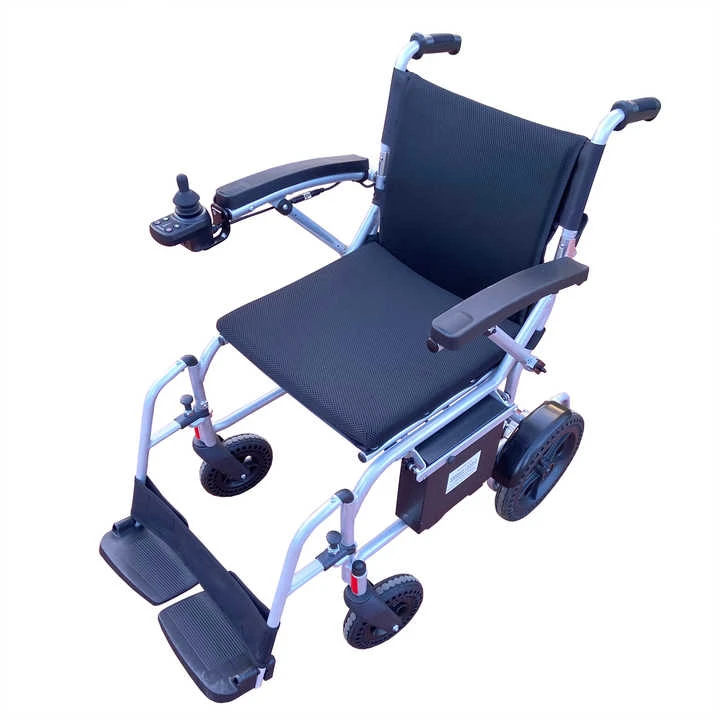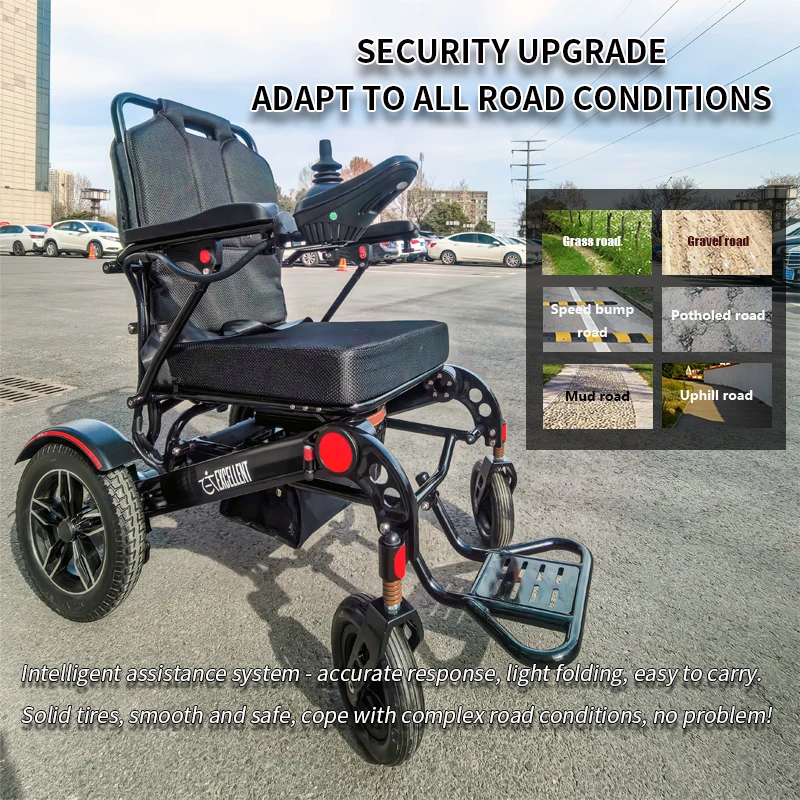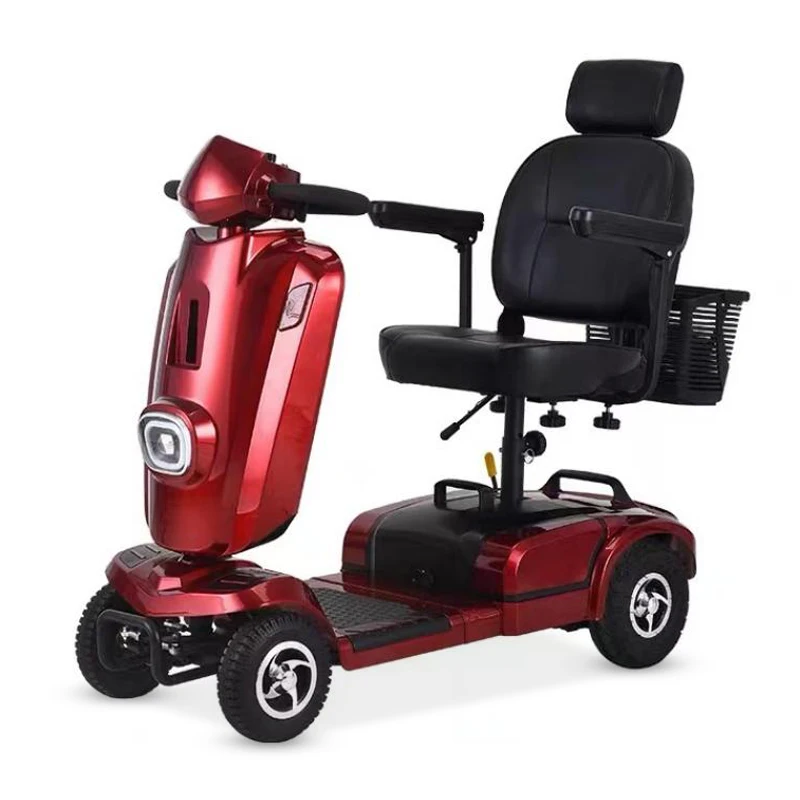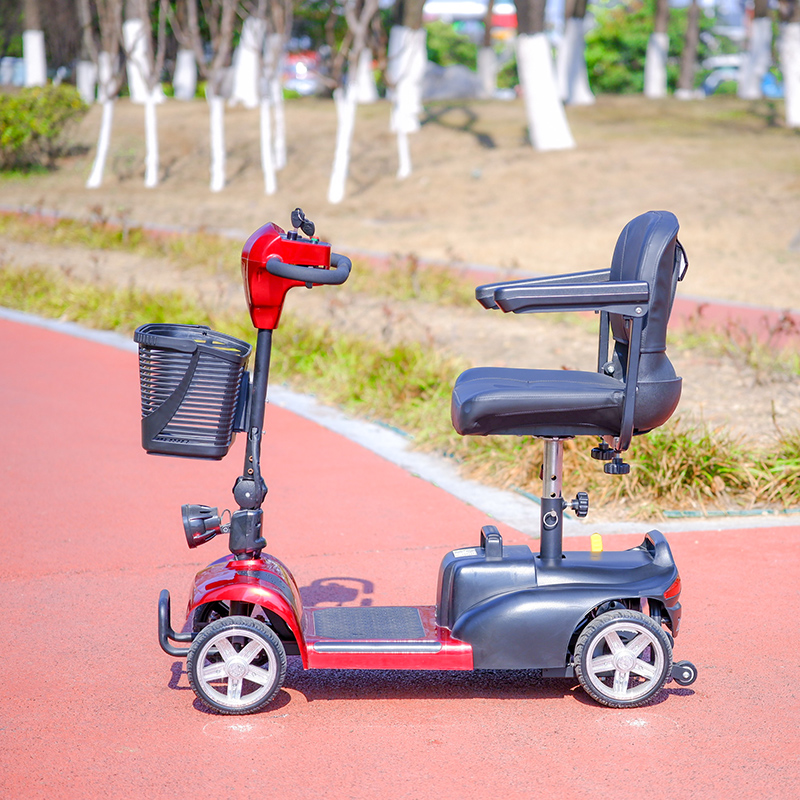The real value lies not in the chair, but in the freedom it empowers
The global shift toward aging populations and increased mobility demands has propelled lightweight foldable electric wheelchairs into the spotlight as a transformative solution for B2B healthcare, hospitality, and logistics sectors. These innovative devices merge portability, durability, and advanced technology, addressing critical pain points in medical care, elderly assistance, and travel accessibility. This article explores how these wheelchairs are reshaping B2B markets through strategic design and functional superiority.

1. Market Drivers: Aging Populations and Evolving Demand
By 2030, over 1.6 billion people worldwide will be aged 60 or older, with mobility challenges affecting 20% of this demographic. Traditional manual wheelchairs, while cost-effective, fall short in scenarios requiring frequent transport or outdoor use. Portable electric wheelchairs bridge this gap with:
- Space Efficiency: Compact folding mechanisms reduce storage footprints by up to 40%, ideal for hospitals and airports.
- Enhanced Mobility: Brushless motors and adaptive controls enable seamless indoor/outdoor navigation, catering to uneven terrains and crowded spaces.
- Regulatory Compliance: Certifications like CE and FDA ensure safety and reliability, critical for medical procurement.
2. Core Advantages: Redefining User and Caregiver Experience
A. Ultralight Construction
By replacing steel frames with aerospace-grade aluminum or carbon fiber, these wheelchairs achieve 15–30 kg weight ranges, enabling single-handed lifting. For example, models with detachable lithium batteries (e.g., 24V 10Ah) weigh under 20 kg, simplifying logistics for hospitals and rental services.
B. Smart Mobility Features
- Extended Ranges: Lithium-ion batteries provide 15–20 km per charge, supporting full-day use in senior care facilities.
- Terrain Adaptability: Anti-slip tires and shock-absorbing suspensions enhance stability on wet or uneven surfaces.
- IoT Integration: Optional sensors monitor battery health and usage patterns, reducing maintenance costs for fleet managers.
C. Customizable Design
- OEM Branding: Custom logos and packaging options allow healthcare providers to align products with institutional identities.
- Adjustable Components: Seat width, armrest height, and tilt angles accommodate diverse user needs, from pediatric to bariatric care.
3. B2B Applications: From Efficiency to Ecosystem Integration
A. Healthcare Facilities
- Hospital Transport: Narrow frames (e.g., 91 cm turning radius) navigate tight ICU corridors, reducing patient wait times by 40%.
- Rehabilitation Programs: Integrated health sensors track recovery metrics, enabling data-driven care plans.
B. Hospitality and Tourism
- Airport Assistance: Airlines increasingly approve foldable models with detachable batteries, ensuring compliance with baggage regulations.
- Hotel Mobility Solutions: Silent motors (<45 dB) and sleek designs blend seamlessly into luxury accommodations.
C. Rental and Subscription Models
- Urban Mobility Hubs: Cities like Shanghai deploy app-based rental systems, processing bookings in 30 seconds and boosting utilization rates by 300%.
4. Competitive Landscape: Differentiation in a Crowded Market
A. Premium vs. Value Segments
- High-End Models: Brands like Otto Bock and Invacare dominate with features like carbon fiber frames and AI-driven controls.
- Mid-Tier Providers: Chinese manufacturers leverage economies of scale to offer devices at 30–50% lower costs, appealing to budget-conscious buyers.
B. Sustainability Initiatives
- Eco-Friendly Batteries: Phosphate iron lithium (LiFePO4) batteries extend lifespan to 1,000 cycles, reducing e-waste.
- Recyclable Components: Aluminum frames and PU tires minimize environmental impact, aligning with ESG goals.
5. Future Outlook: Data-Driven Mobility Ecosystems
The next wave of innovation focuses on:
- Predictive Maintenance: Sensors detect brake wear or motor anomalies, preempting failures.
- Smart Cities Integration: Priority access to public transit and priority parking lanes enhance user independence.
Conclusion
For B2B stakeholders, lightweight foldable electric wheelchairs represent more than a product—they are a gateway to scalable, user-centric mobility ecosystems. By prioritizing modularity, compliance, and data integration, businesses can unlock new revenue streams while addressing global accessibility challenges. As one industry leader notes: “The real value lies not in the chair, but in the freedom it empowers.”





.png)



